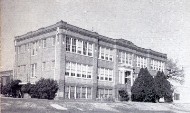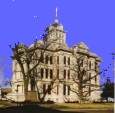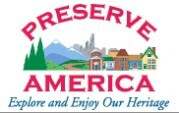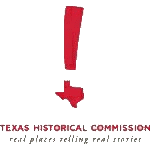Milam County Historical Commission
Milam County, Texas
All credit for these articles go to
Susie Sansom-Piper and
the Rockdale Reporter
Milam County, Texas
All credit for these articles go to
Susie Sansom-Piper and
the Rockdale Reporter






ON THE OTHER SIDE OF THE TRACKS, PART III
No. 3 washtubs, pit toilets, unlocked doors
by Susie Sansom-Piper
Rockdale Reporter - February 19, 2009
During the 1920s through 1940s the majority of Rockdale’s black citizens were home
owners.
These homes usually consisted of three rooms, built shotgun style, or four to five rooms
in bungalow style.
The most elaborate house was the Frank “Doc” Cummings, formerly located on Rice Street.
Other homes that were considered to be elaborate were those of Jack Shields, Paul
Moultry, Buddy Speed, Jimmy Johnson, Rev. G. T. Burley, Arthur Morgan, Jim Beals, Willis
Beals, Henry Smith, Willie Floyd and Lena Perkins.
Most were beautifully painted, well furnished and had large porches for sitting areas.
The 130-year-old Arthur Morgan home still stands on Spruce Street.
No running water
Running or piped water did not exist. A few people had wells from which they used wooden
or metal buckets to draw up water.
Others had barrels or cisterns to catch rain water, or they hauled water up from the city
water pump which was located near the Old City Cemetery.
Water was 25 cents a barrel.
Rural residents hauled water from Yegua Creek, Brushy Creek or the San Gabriel River.
The San Gabriel also provided a favorite swimming hole. The water served all purposes,
drinking, cooking, bathing, washing and more.
Lye soap
Clothes were washed by hand in a No. 3 washtub with a metal rub board.
White clothes were boiled in an old black iron washpot and all were rinsed two or three
times and hung on clotheslines to dry.
Some of the outer garments were starched stiffly with Argo or Faultless starch that was
cooked.
Some of the soap was of the homemade lye variety.
A popular soap that could be purchased for washing was P&G (Proctor & Gamble).
Bluing was also used in the rinse water to give the white clothes a vivid white look.
It always took two days to do the household laundry, one for washing and one for ironing.
Irons consisted of heavy iron metal and were heated on the stove, in the fireplace or a
special furnace for the irons.
With the invention of the gasoline iron, the electric iron and washer/dryer, the down
side of doing laundry was eliminated.
Outhouses
Sanitary conditions were very poor.
A wash basin or wash pan was used for hand and face washing and the No. 3 tub served as a
bathtub.
There was an outhouse located, usually, on the far end of the property. Certain times of
the month a scavenger man was provided to clean out the toilets.
In later years the pit toilet was introduced. These were rounded concrete curbs placed
inside the outhouse over a huge ditch.
When affordable bathrooms became available, the septic tank for waste was put into use.
Poll tax
Electricity was not available during this time. Oil lamps, candles or perhaps a lantern
provided light.
In the late 40s, shortly before the coming of Alcoa, the late Frank Owens, shop teacher
at Aycock and also a carpenter, helped to lay and supervise the provision of sewage and
electricity in this area of the city.
There was little interest in politics. The poll tax fee of $1.75 was required for all who
wished to vote and most people could not afford it.
Iron cots
Lawlessness was practically obsolete.
Folks left their doors unlocked even when attending functions outside the home.
Many slept outside on iron cots during the summer months to keep cool.
Occasionally there would be an arrest for drunkenness or fighting but generally folks who
lived “on the other side of the tracks” catered to happenings in the area.
Author Susie Piper visits
with Donald Ray Allen,
current resident of the
130-year-old ‘Morgan House’
on Spruce Street. Mrs.
Piper was born at a
location across the street.
Photo by Mike Brown
Poll tax receipt from the 1950s.
The $1.75 fee prevented many from
casting ballots.
.

